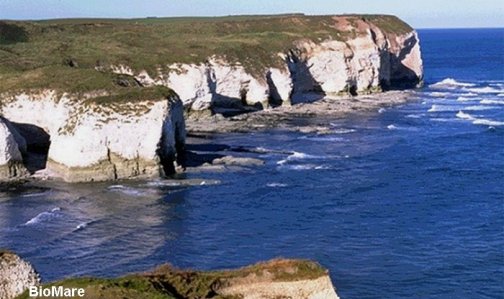By the sea, Yorkshire
Wave action produces many remarkable features on Britain’s coast. Waves erode shorelines, undermining the base of cliffs and causing them to collapse from time to time.
Waves attack cliffs in two main ways: by hurling pebbles and, in storms, boulders at the cliff as they crash into it, also by compressing trapped air into cracks in the rock, helping to split them apart.
As the cliffs are eroded backwards, an almost flat shelf, or wave-cut platform, can develop between the high and low tide marks – causing waves to break offshore in this photo. Where the rock of the cliff is more resistant, headlands are formed, with bays where the rock is weaker. Sea caves often form where there are larger fractures or faults in the rock.
Waves attack cliffs in two main ways: by hurling pebbles and, in storms, boulders at the cliff as they crash into it, also by compressing trapped air into cracks in the rock, helping to split them apart.
As the cliffs are eroded backwards, an almost flat shelf, or wave-cut platform, can develop between the high and low tide marks – causing waves to break offshore in this photo. Where the rock of the cliff is more resistant, headlands are formed, with bays where the rock is weaker. Sea caves often form where there are larger fractures or faults in the rock.
Flamborough Head, Yorkshire

Jean-Paul Ducrotoy: www.biomareweb.org

